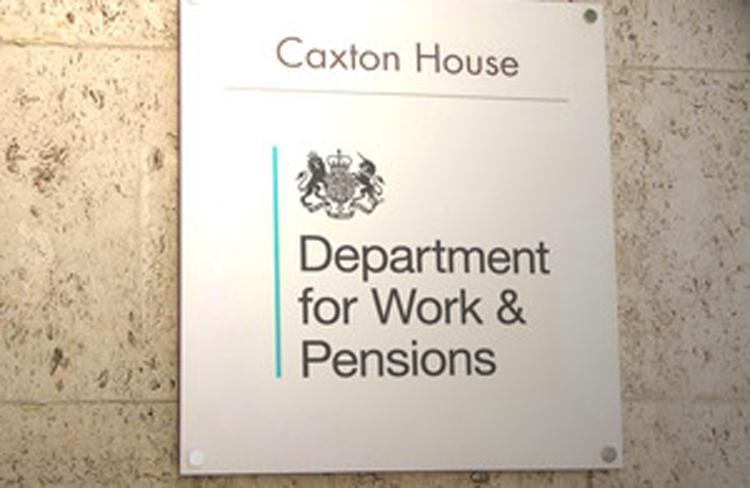Detailed guide: The Personal Independence Payment (PIP) toolkit

A guide to help organisations and people in support roles explain Personal Independence Payment (PIP) and changes to Disability Living Allowance (DLA) to claimants.
PIP and DLA
DLA is ending for people who were born after 8 April 1948 and for people who are 16 years old or over.
People will continue to get DLA until the Department for Work and Pensions (DWP) writes to them:
- to tell them when it will end
- to invite them to apply for PIP
People will continue to get DLA and not be invited to apply for PIP if:
- they were born on or before 8 April 1948
- they are under the age of 16
This toolkit provides information about PIP for support organisations and claimant advisers. The information can also be adapted into training for your people.
If you currently get PIP or would like to apply for it, read the PIP guide for claimants.
When PIP affects existing DLA claimants
We are inviting individuals to claim PIP when:
- we receive information about a change in a person’s care or mobility needs
- a person’s fixed term DLA award is due to end
- children turn 16 years of age – unless they have been awarded DLA under the special rules for terminally ill people, or they are in hospital
- people are on indefinite or long term awards who were born after 8 April 1948 and those who are 16 years old or over – these individuals will be invited through a random selection process as PIP progresses
Invitation letters to claim PIP
We will write to the individuals at different stages throughout the PIP claim.
We have published a series of example letters sent to DLA claimants (sometimes referred to as notifications) to invite them to start a claim for PIP. You can download example letters to cover the following circumstances:
- claimant is invited to claim PIP on reaching age 16 (PIP 0185)
- claimant is selected to claim PIP (PIP 0201)
- claimant is invited to claim PIP – end of fixed term award (PIP 0202)
- claimant is invited to claim PIP – change of condition (PIP 0204)
These letters are examples only. There are more letters covering different scenarios.
Existing DLA for child claims and PIP
We will write to parents or guardians of young people who are currently getting DLA when the young person is 15 years and 7 months old. This letter will explain that the young person will need to claim PIP when they turn 16 years old.
The letter will also ask:
- whether the young person will need an appointee when they turn 16
- what bank account their money needs to be paid into after they turn 16
Two months before the young person’s 16th birthday, at 15 years and 10 months old, we will send a letter to the parents or guardians to remind them that the young person will be invited to claim PIP at 16 years old.
At age 16, a letter will be sent to the young person, or their appointee, to invite them to claim PIP. It will explain:
- how to claim PIP and by when
- that if they do not claim PIP by the date given on their letter, their DLA will stop
- that their DLA will continue to be paid (even if their DLA award was due to end) as long as they send us any information we ask for and go to a face-to-face consultation, if one is needed
If the young person has not received their letter 28 days before they turn 16 years old, parents or guardians need to contact the Disability Service Centre. Payments could stop if they do not do this.
Young people claiming DLA with a terminal illness or who are in hospital will not be invited to claim PIP.
Visit Disability Living Allowance (DLA) for children for more information.
When we told DLA claimants about PIP
All existing DLA claimants got more information about PIP in their usual annual letters. This tells them what their new benefit rate will be.
How will DLA claimants be reassessed?
For information about how existing DLA claimants will be reassessed for PIP, read the PIP handbook.
‘DLA is ending’ campaign information
You can find out more about:
- how DWP is raising awareness that DLA is ending
- what claimants need to do next
- where claimants can go to get the information they need to make a decision about claiming PIP before their DLA ends
To find out more, see the:
How individuals make a claim to PIP
To start a new PIP claim, contact DWP through the details provided in the PIP claimant guide. This includes the details of a Next Generation Text relay service and a British Sign Language (BSL) video relay service.
Once a claim has been made, DWP will register the claim and send the individual a ‘How your disability affects you’ (PIP2) form to fill in, together with an information booklet:
-
PIP2: how your disability affects you (for reference only)(PDF, 738KB, 33 pages)
-
PIP2: how your disability affects you: information booklet(PDF, 177KB, 12 pages)
-
Welsh: PIP2W: sut mae eich anabledd yn effeithio arnoch (ar gyfer cyfeirio ati yn unig)(PDF, 896KB, 34 pages)
-
Welsh: PIP2W: sut mae eich anabledd yn effeithio arnoch: llyfryn gwybodaeth(PDF, 175KB, 12 pages)
Where an individual cannot call us, or needs extra help and has no one to support them making a claim by telephone, they can write to us to request a PIP1 claim form:
Personal Independence Payment New Claims
Post Handling Site B
Wolverhampton
WV99 1AH
The PIP1 claim form captures the same basic information we take over the phone. It is sent along with PIP1 A1: additional information.
The forms will be personalised to the individual who asked for them and should not be copied or used for other people. We have published examples of the forms for information only:
-
PIP1: claim form (for reference only)(PDF, 698KB, 20 pages)
-
PIP1(AI): claim form: additional information(PDF, 131KB, 2 pages)
-
Welsh: PIP1W: ffurflen gais (ar gyfer cyfeirio ati yn unig)(PDF, 704KB, 21 pages)
-
Welsh: PIP1(AI)W: ffurflen gais: gwybodaeth ychwanegol(PDF, 131KB, 2 pages)
When individuals will get the decision on a PIP claim
The actual time to get a decision on a PIP claim depends on the person’s circumstances. We are dealing with claims as quickly as we can. Any delays experienced in the new claims process will not change the date when individuals are paid, which is:
- the date their claim is registered, or
- a later date, if they submit a claim but have not yet completed the 3-month qualifying period
Existing DLA claimants will continue to get DLA until a decision has been made on their PIP claim.
PIP reviews
The length of time that PIP is awarded is based upon each claimant’s individual circumstances. PIP awards can vary in length. The shortest award is 9 months. The longest is an ongoing award with a ‘light touch’ review at 10 years.
The letter they receive when their claim is approved will tell them when their claim will end and if it will be reviewed. We do regular checks on awards that need a review to make sure that everyone continues to receive the most appropriate level of support.
Awards with a specific end date and review date
We will write to claimants before their PIP end date to see if their needs have changed. They will be asked to complete a form called ‘Award Review – How your disability affects you’ and sent some notes to help them fill it in. We have published examples of the forms for information only:
-
AR1: award review: how your disability affects you (for reference only)(PDF, 762KB, 16 pages)
-
AR1 notes: award review: information to help you(PDF, 645KB, 2 pages)
-
Welsh: AR1W: adolygiad dyfarniad sut mae’ch anabledd yn (ar gyfer cyfeirio ati yn unig)(PDF, 782KB, 16 pages)
-
Welsh: AR1W notes: adolygiad dyfarniad gwybodaeth i’ch helpu(PDF, 707KB, 2 pages)
Once the form has been reviewed by DWP, the claimant might be asked to go to a face-to-face meeting with an independent health professional to discuss how their condition affects their daily life.
A decision letter will then be sent to the individual telling them what will happen with their PIP. If their needs have changed, their PIP award might be increased, reduced or stopped.
If their needs have not changed the award will be maintained at the same rate with a new award end date and new review period
Ongoing awards with a ‘light touch’ review
This is for claimants who have:
- very stable needs which are unlikely to change over time
- high level needs which will either stay the same or get worse
- a planned award review date due on or at State Pension age
- a special rules for terminal illness claim due when of State Pension age
These claimants would not usually be expected to have a face-to-face assessment at review.
Your organisation and PIP
We have published information and guidance specifically aimed at helping your organisation with the introduction of PIP.
In addition:
- DWP partnership managers in your area may be able to meet you to talk to you about the new benefit, using this toolkit
- alternative formats for claimants are available, including an easy read guide in English and Welsh, and video guides with British Sign Language (BSL)
Quick guides to PIP
We have published short guides about PIP, including a:
- PIP quick guide – this gives a summary of PIP and the changes to DLA and is tailored for specific groups
- postcode map – this shows which postcode areas the assessment providers (Independent Assessment Services and Capita Health and Wellbeing) cover
PIP handbook
Read the PIP handbook for detailed information about the benefit, including:
- conditions of entitlement
- assessment criteria
- how to make a claim
- reassessing existing DLA claimants for PIP
- special rules for terminal illness
- how to dispute decisions
- access to other benefits and services that claimants may be entitled to
Information for specific groups
We have published information and guidance on PIP for:
Leaflets about PIP
Leaflets are available to support advisers, intermediaries and healthcare professionals who deal with claimants.
See DWP leaflets and how to order them.
A ‘DLA is ending’ leaflet, providing information for claimants about DLA ending and how to claim PIP, is also available to order.
What to do with DLA claim forms
You can continue to order and provide DLA claim forms for children under 16 (‘DLA1 Child’ or ‘DLA1A Child’) and Attendance Allowance forms for over 65s (‘AA 1’ or ‘AA 1A’).
You should destroy all ‘DLA1 Adult’ and ‘DLA1A Adult’ forms, including large print and Welsh language versions – do not give them to claimants.
Published 3 September 2013
Last updated 19 July 2019 + show all updates
- Updated ‘Ongoing awards with a ‘light touch’ review’ section to include information for State Pension age PIP claimants.
- Added information about PIP reviews, including samples of the forms and booklets that are provided to claimants.
- Added revised PIP1: Sample Personal Independence Payment claim form (for reference only) – English and Welsh and PIP2: How your disability affects you (for reference only) – English and Welsh.
- Added a link to new PIP video guides with British Sign Language (BSL).
- ‘Atos’ changed to ‘Independent Assessment Services’.
- First published.











Responses